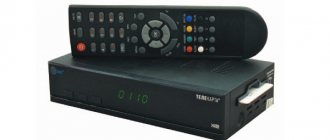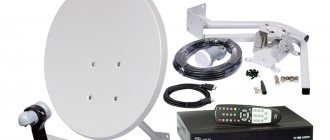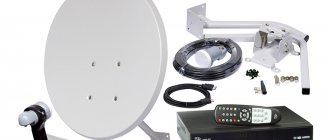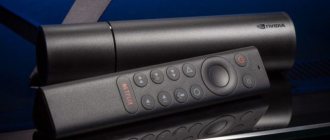Lately, people are increasingly talking about the Signal messenger as the safest and most secure. Its creators promise the best end-to-end encryption and claim that they only store minimal user information. In particular, many Whatsapp users, after Facebook’s planned changes in the processing of personal data, decided to switch to other instant messengers. There is also Telegram, but it is more popular among Russian speakers, and residents of foreign countries are afraid of the “Russian trace”.
If you decide to try Signal, we'll tell you how to install and configure this messenger. Using iOS as an example, although everything will be the same on Android.
Signal Features
To begin with, we note that the application is not only well protected, but also fast. In this regard, Signal is similar to Telegram. For example, if you are in a place where the mobile Internet is very weak. Or the operator’s package has run out and the speed check.org shows only “basic” 64-512 kB/s. In this case, a regular photo on Viber or Whatsapp will be sent endlessly. Signal and Telegram transfer files in a special way and use efficient servers, so the transfer will take time, but will not freeze.
Final recommendations
These settings will help you ensure the protection of personal information in the messenger, including the content of conversations, metadata and profile data.
To prevent anyone from gaining physical or remote access to your device, be sure to lock your smartphone, update all applications and operating system on time, and install a reliable security solution.
And if you're not planning on switching to Signal just yet, read on to learn how to properly set up Discord and Telegram for maximum security and privacy.
Where to download Signal
Messenger applications are available for all operating systems - mobile and desktop; links can be found on the official website
Well, let's turn to the mobile utility. 1. Follow the links from the official website to download the latest version of the application from the AppStore and Play Market or find it by searching the catalog. 2. When you first start, you will see a registration screen. Nothing special compared to other messengers - enter your phone number, confirm with the code from SMS. The app will also ask for permission to send you notifications (you can turn it off later if you wish) and access to your contact list to immediately find your friends who are already using Signal.
3. Complete your profile. Enter a name, add an avatar. These items are optional. Click "save". 4. Select a PIN code to access the program. Another point to improve reliability. 5. View your contact list in the app. You'll see people who have already installed Signal. You can send invitations to those who do not yet use private messenger; to do this, click on the profile picture and select “Invite friends” from the menu. Now let's talk about important little things that may come in handy.
How to improve security?
Although conversations in Signal are already protected by end-to-end encryption, you can enhance the security. Turn on advanced privacy options by going to the menu and selecting Privacy.
There is a Screen Lock section where you can set up authentication using your fingerprint or Face ID. It's also worth turning on a delay for locking the screen. Let’s say if you don’t use Signal for a minute, then upon new access the program will require authentication: no one else will read your correspondence. We also recommend turning on screen protection. It blocks the Signal preview from the list of running applications. Banking applications also have this feature. Another security option is the ability to hide your IP address. Of course, during regular correspondence they won’t recognize him anyway, but during voice or video calls they can. The creators of Signal took care of this too: turn on the “Always relay calls” toggle switch. In this case, the connection will go through the program server. There may be delays, but if safety is more important, then there is no way out. Another useful option is “Registration blocking”. In the case of some other instant messengers, people who have access to your SIM card can chat on your behalf. With Registration Lock enabled, Signal will prompt you for a PIN when a new registration is attempted for your number. Are you already using Signal or are you just planning to install this messenger? Have a nice chat!
Location of the Express AM-22 satellite (53 E.) in the main regions of the broadcast area
Reception frequency from satellite AM22 11044, FEC 3\4, Symbol rate 44950, vertical polarization. Due to the fact that the symbol rate is 44950 mSIM/s, reception is possible only with a tuner that can receive programs at the specified rate. We can recommend purchasing tuners: “Golden Interstar” - 8001,8005,770S,780S,I790S and others; “OpenBox” - 300,800,810,820; “Topfield” - all models; “Next” - almost all models; “Globo” - 4100,7010 and others. Satellite tuners “Medion” and “SkyMaster” do not support speed 44950. Have a nice welcome!
Installing and configuring an antenna for the Express AM22 satellite to receive the signal from ChGTRK “Grozny”
To receive a signal from the Express AM22 satellite, an offset antenna with a diameter of 0.9 - 1.0 m is used. In our region, antennas from two manufacturers are mainly used: the Russian “Supral” and the German “Golden inerstar”, the Chinese “Svec”. There are no fundamental differences in the quality of reception between them. Initially, you need to decide on the choice of location for installing the antenna. Approximately, the antenna should point to the place where the sun is at 3 o'clock in the afternoon. More accurately, the position of the antenna can be calculated using the Satellite Antenna Alignment program, or here, there you can more accurately determine the time of alignment of the azimuth of the antenna and the sun, as well as the elevation angle. Then assemble the antenna according to the assembly instructions. Firmly secure the support at the selected point. When installing on a balcony or loggia, the fence is drilled through and the support is attached with ordinary long bolts of large diameter. When installing on a wall, holes are drilled in it and self-propping anchor bolts are used.
It should be noted that for an offset antenna the elevation angle is calculated differently than for a direct-focus antenna. When the antenna is installed strictly vertically, it does not look at the horizon line, but at a certain angle, which is called the “elevation angle”, and is indicated in the antenna’s passport. In this case, for the “Supral” offset antenna 0.9 - 1.1 m, the elevation angle will be 26.5 degrees. And since for the Express AM22 satellite the elevation angle calculated using the Satellite Antenna Alignment program is 21.71° ('this angle changes depending on the time of year). After mounting the antenna, you should immediately turn it in the direction of the sun's position at approximately 3-4 o'clock in the afternoon, and tilt it forward vertically, approximately 4 degrees.
Often there are some obstacles in the direction of the satellite that can interfere with signal reception.
Using the Satellite Antenna Alignment program, you can calculate the required antenna offset depending on the height of the obstacle. It should be noted that any obstacles, including window glass, not to mention trees and bushes, located in the path of the signal can make it impossible to receive it. Having installed the antenna and directed it to the location where the satellite is supposed to be located, lightly secure it to the bracket, but so that it can rotate on it with little effort. The setup process is greatly simplified by installing a clamp under the antenna mount on the bracket. In this case, the mounting bolts can be loosened to such an extent that the antenna will rotate freely, supported by the clamp. Then, if you are tuning by receiver: You should enter the parameters of the strongest transponder on the satellite: For the Express AM22 satellite this is: frequency - 11044 Mhz, vertical polarization (V), flow rate or S/R Symbol rate - 44948, FEC-3/ 4 or Auto. In most receivers, this is done as follows: Enter the Menu Select the “antenna installation” or “transponder search” item. You can configure it on any satellite from the list. It is not this that is important, but the correctly entered value of the transponder parameters. Be sure to check what type of converter (LNB) is installed in the settings. In this case, the converter type must be “Universal”, or in some receivers “Single”. If you choose the right converter type, you should have the following local oscillator frequencies: 9750/10600. Next, use the number buttons on the receiver’s remote control to enter the above-mentioned transponder parameters. The setting is made using the menu item “Signal Level” (Scan, etc.). Modern tuners usually have 2 level scales. The first scale - “Level (Signal)” - shows the IF level at the tuner input. The second - “Quality” - shows the level of the useful signal with the specified parameters (frequency, speed and FEC). The level on the first scale includes both the useful signal from the satellite and the noise of the head, on-air noise, and the noise of all devices on the path from the head to the tuner. Most often, before connecting the head, the level is “0” and becomes greater than zero when it is connected. Some tuners have only one scale, but often when a useful signal is captured, the color of the scale changes, for example, it turns from gray to yellow. The initial search is carried out on the first scale. The level on it increases as it approaches the satellite. The search is carried out by scanning the sector in which the satellite is supposed to be located. It should be borne in mind that obstacles, such as a nearby tree, the sun, or just a hand, also increase the signal level on the first scale. But it will be impossible to receive a satellite through them. When the tuner receives a signal from the satellite, the level will appear on the second scale - “Quality”. Further adjustment is carried out on the second scale according to the maximum signal. The scale may be located in another menu item and, depending on the brand of the receiver and the version of the operating system that supports it, be located vertically or horizontally. One thing is certain: when the “LNB power supply” option is disabled, the scale will indicate a zero value. You should scan starting from the position in which you have the antenna installed, slowly rotating left or right 10-15 degrees in different directions. You need to rotate it quite slowly, since the digital signal is not processed as quickly as the analog signal, and appears on the TV screen with some delay. As soon as you catch a signal, the bottom bar will also color. In this case, you should very carefully turn the antenna to achieve the maximum signal level in the lower strip. If you did not catch the satellite in one pass, then raise the antenna a little up or down and repeat the operation. You may have to do this procedure several times. The final indicator of correct satellite tuning is the presence of a picture on the TV screen. It happens that on nearby satellites some frequencies coincide and tuning the antenna based on the presence of a level in the lower band in the menu does not lead to tuning to the desired satellite. Therefore, having configured the antenna in this way, before final tightening the fastening nuts, you should make sure that the picture is present. The final setting should be carried out on the transponder on which you are going to connect to the ChGTRK "Grozny" - frequency 11044, FEC 3\4, symbol rate 44950, vertical polarization (V) Having achieved the maximum signal level, proceed to the final tightening of the fastening nuts. They should be tightened carefully, all the time monitoring the signal level on the receiver scale, since in this case the antenna moves slightly in one direction or another depending on which side you tighten the nut. If you are setting up an antenna using a computer with a Sky Star 2 board installed, then you should go here.
Location of the Express AM-22 satellite (53ºE) in the main regions of the broadcast area
| № | Locality | Coordinates | Height above sea level | Elevation angle, º. | Azimuth, º. | |
| with w | in d | |||||
| 1 | Dublin | 53º 21' | -06º 15' | 90m | 9,5 | 115,5 |
| 2 | Oslo | 59º 56' | 10º 45' | 180m | 13,7 | 133,6 |
| 3 | London | 51º 30' | 0º07' | 25m | 13,8 | 120,6 |
| 4 | Amsterdam | 52º 21' | 04º 54' | 0m | 15,7 | 125,3 |
| 5 | Stockholm | 59º 19' | 18º 02' | 40m | 16,6 | 140,8 |
| 6 | Brussels | 50º 48' | 04º 26' | 45m | 16,6 | 124,3 |
| 7 | Paris | 48º 50' | 02º 18' | 125m | 16,7 | 121,6 |
| 8 | Copenhagen | 55º 39' | 12º 32' | 10m | 17,2 | 134 |
| 9 | Hamburg | 53º 32' | 09º 58' | 10m | 17,5 | 130,7 |
| 10 | Helsinki | 60º 10' | 24º 58' | 10m | 17,8 | 148,4 |
| 11 | Cologne | 50º 57' | 06º 59' | 70m | 18 | 126 |
| 12 | Berlin | 52º 32' | 13º 24' | 50m | 20 | 133,8 |
| 13 | Berne | 46º 58' | 07º 27' | 840m | 21,3 | 125,6 |
| 14 | Marseilles | 43º 50' | 05º 23' | 225m | 21,4 | 122,2 |
| 15 | Madrid | 40º 24' | 03º 43' | 650m | 22,5 | 119 |
| 16 | Prague | 50º 05' | 14º 25' | 290m | 22,6 | 133,8 |
| 17 | Munich | 48º 08' | 11º 38' | 520m | 22,7 | 130,2 |
| 18 | El Jazeera | 36º 46' | 03º 02' | 30m | 23 | 116,6 |
| 19 | Warsaw | 52º 13' | 21º 03' | 90m | 23,6 | 141,7 |
| 20 | Rome | 41º 53' | 12º 30' | 70m | 26 | 128 |
| 21 | Tunisia | 36º 48' | 10º 08' | 70m | 28,5 | 122,8 |
| 22 | Tripoli | 32º 52' | 13º 11' | 35m | 33 | 123 |
| 23 | Istanbul | 41º 04' | 28º 58' | 110m | 36,8 | 145,8 |
| 24 | Ankara | 39º 58' | 32º 49' | 1180m | 40 | 149,3 |
| 25 | Trabzon | 41º 08' | 39º 42' | 507m | 41,2 | 160,2 |
| 26 | Cairo | 30º 03' | 31º 21' | 45m | 48 | 141,5 |
| 27 | Damascus | 33º 32' | 36º 20' | 980m | 49 | 151,5 |
| 28 | Tehran | 35º 42' | 51º 26' | 1760m | 50 | 177,3 |
| 29 | Kuwait City | 29º 19' | 48º 02' | 30m | 55,5 | 169 |
| 30 | Dubai | 25º 17' | 55º 22' | 10m | 60,4 | 185,5 |
| 31 | Mecca | 21º 26' | 39º 47' | 330m | 61,3 | 147 |
| 32 | Minsk | 53º 55' | 27º 35' | 240m | 24,7 | 149,5 |
| 33 | Kyiv | 50º 27' | 30º 31' | 120m | 28,7 | 151,7 |
| 34 | Tbilisi | 41º 44' | 44º 49' | 620m | 41,8 | 167,8 |
| 35 | Baku | 40º 23' | 49º 55' | 25m | 43,7 | 175,2 |
| 36 | Astana | 51º 10' | 71º 25' | 350m | 29,5 | 203 |
| 37 | Karaganda | 49º 52' | 73º 10' | 540m | 30,4 | 205,6 |
| 38 | Dzhezkazgan | 47º 50' | 67º 03' | 365m | 34 | 198,6 |
| 39 | Saint Petersburg | 59º 57' | 30º 18' | 50m | 19,5 | 154,2 |
| 40 | Yaroslavl | 57º 39' | 39º 50' | 100m | 23,7 | 164,5 |
| 41 | Permian | 58º 03' | 56º 14' | 160m | 24,3 | 183,8 |
| 42 | Tyumen | 57º 13' | 65º 27' | 55m | 24,7 | 194,7 |
| 43 | Omsk | 54º 59' | 73º 23' | 100m | 24,9 | 204,4 |
| 44 | Moscow | 55º 48' | 37º 35' | 165m | 25,3 | 161,5 |
| 45 | Kazan | 55º 46' | 49º 07' | 110m | 26,7 | 175,2 |
| 46 | Chelyabinsk | 55º 11' | 61º 25' | 220m | 27 | 190,2 |
| 47 | Ufa | 54º 47' | 55º 55' | 140m | 27,8 | 183,5 |
| 48 | Samara | 53º 14' | 50º 11' | 45m | 30 | 176,4 |
| 49 | Volgograd | 48º 45' | 44º 33' | 60m | 33,7 | 168,6 |
| 50 | Rostov-on-Don | 47º 18' | 39º 41' | 30m | 34,2 | 162 |
| 51 | Sharoy | 42º 38' | 45º 48' | 1500m | 41,5 | 169,4 |
| 52 | Makazhoy | 42º 44' | 46º 04' | 1900m | 41,5 | 170 |
www.Chechnyatoday.com
{mosloadposition user9}











